When I happen to be travelling on or close to Rosh Chodesh, and I can’t attend my regular Jerusalem based RCC, I try to attend one in the locality that I happen to find myself in. Even when I am at home in Israel, every now and then I attend an RCC either in addition to or in place of the one that I organize in the Jerusalem area. That was the case this month when organizing something in Jerusalem didn’t seem realistic with the current restrictions. And so this month, I found myself attending the RCC hosted in the city of Raanana. In general, when I do attend an RCC other than my own, I do not write about it. It’s not really my place – I am just a guest and others in attendance may not be up for a public critique of the wine they brought. In this case though when I RSVP’ed that I was coming, one of the organizers specifically asked that I write it up the same way as I would an RCC of my own. I warned him , that there may be wines that I don’t care for or that the food might not be up to par – and I don’t really hide these things from my readers – that’s what the Unfiltered means in the title of the blog after all. But he insisted, and so here we are. As always, first a word about the food. As expected, hosting in someone’s home at this time is unrealistic and so the RCC took place at Brasserie Kazan which is located at 71 Achuza (on the corner of Achuza and Kazan). We sat outside with a reasonable amount of space between diners. Everyone wore masks –including attendees prior to eating and restaurant staff. The food was cooked well and was really plentiful. My favorite dish was the pappardelle with meat – the pasta was cooked perfectly, and the sauce worked well with the meat flavor accenting rather than overpowering the dish and vice versa. Well done. Other highlights were the Salmon Tartare on bruschetta and the Pineapple carpaccio for dessert. The service was excellent as well. If I lived in Raanana, I could see myself going there regularly. And now, on to the wines.
Adir, 10, 2013 – A blend of Cabernet Sauvignon, Cabernet Franc, Petit Verdot and Shiraz, this wine was released in honor of Adir’s 10th Anniversary. The Shiraz is very much the forward-facing component here, even though it is a very small part of the blend. Fruit forward, a little hot and slightly pushed, yet overall it was drinkable. This was my least favorite wine of the night.
Gvaot, Gofna Reserve, Cabernet Sauvignon, 2011 – It’s been a while since I had a good bottle of the 2011. This wine showed beautifully. Beautiful earthy flavors up front with nice integrated dark fruit, tobacco, coffee, and some mineral. The tannin is now moved into the middle of the wine and has integrated well. Really, really nice. It is fully at peak now and will hold for another year or so (maybe more, but better to be conservative here – I have had bottles that were not stored as perfectly as this that had already deteriorated).
Gvaot, Herodian, Cabernet Sauvignon, 2011 (Bonus Bottle) – My friend Simon, who joined me at for the trip to Raanana, brought the Gofna mentioned above – and thought it might be interesting to see how the Herodian [G’vaot’s entry level line at the time – since discontinued] fared as the prime varietal used is the same (both are blends though, as is often the case with Israeli varietal bottlings where other varietals may be blended in in small amounts). While interesting, all I can say here is that the wine was not dead. But it was certainly WAY over the hill. As this wine was stored really well, I doubt anyone would have better luck – drinkable and even OK – but no more at this point.
Carmel, Kayoumi, Shiraz, 2008 – I have not had a 2008 in years. I have to say I was worried. At this point, while the 2008 LE’s are likely still fine (it’s been a while there too) the 2008 Mediterranean is way over and I have not had a 2008 CS in a VERY long time (though I do have a magnum that is likely just fine). I have to say I was thoroughly impressed. This bottle was one of my favorites of the night. In perfect shape. It tasted not the least bit tired. Nice full bodied dark red and blue fruit with nice cracked black pepper in the background. There is a little mint in the mid palate which nicely moves Into the dark chocolate on the finish. I can’t see the wine improving but it can likely hold for another year or two (and maybe more) if it is being stored well.
Carmel, Kayoumi, Shiraz, 2012 – Based on my last experience, I was hopeful that we might finally be ready with this wine – but after an hour in the decanter it was still super closed. Luckily there were spare glasses, and I held this for another forty-five minutes or so and the wine started showing nicely – if not a little leaner than I would have thought. If you have 2010’s or ’11’s drink those – this needs another year and then has a very long life ahead of it.
Château Grand-Puy Ducasse, Pauillac, 2013 – I had pretty low expectations for this wine just based on the vintage (which was very poor for Bordeaux) and having no memory of tasting before, which led me to assume that it did not stand apart from my general impressions of the vintage, if I in fact had tasted it. But – I was pleasantly surprised! A blockbuster it was not, but with a little air, the wine has some really nice flavors. Dark cocoa and red fruit for the most part with a little bit of tobacco on the finish. Medium + body. Very nice and a step above many other 2013’s. Nice!
Herzog, Prince Vineyard, Clarksburg, Petite Sirah, 2012 – Another wine that I had low expectations for – not because I have had it, but in general I am not a Petite Sirah fan. But, while not something that I would likely buy myself, this was one of the better made PS’s I have had. Yes, it was big, ripe, and very blue, but it did not feel pushed at all. There was a nice strong core here that kept everything in check. The finish had a bit of spice and some roasted meat. It could have been served a couple of degrees cooler – but sometimes at these things, that’s out of your control. Overall, a nice wine.
Golan Heights Winery, Yarden, Kerem Yonatan, Cabernet Sauvignon, 2010 – Another wine that showed better than I expected – but not much. In fact, , this is a wine that we featured at our very first RCC over four years ago. I was not impressed then. I’m still not! BUT – it definitely felt more balanced overall. Pushed, yes, Fruity, yes. But not over the top in the way I described it before. Just not something I would buy personally – or a wine that justifies the price. It’s really a pity, because when you compare it to the 2007 version you realize just what potential these wines have. But I would have to assume that the direction that GHW has taken their portfolio is working for them as there really hasn’t been a shift back to the pre-2009 style.
Flam, Reserve, Merlot, 2013 – Flam continues to be one of my absolute favorite wineries. Their Merlot (and Cabernet Sauvignon) is consistently among the best coming out of Israel in the last decade. This 2013 is no different. This wine is developing nicely with nice extraction providing layers of excellent raspberry, blackberry and plum, with some baking spice and vanilla and finally some mild chocolate on the finish. Plenty of time ahead as well. Great stuff.
Domaine du Castel, Grand Vin, 2013 – Full disclaimer, this was my contribution. This is a wine that on release, many people (myself included) had pegged to go the distance. A true blockbuster. First the good news. The wine is showing very well right now. It was one of the best reds of the night IMHO. Beautiful rich dark almost black fruit with nice moist earth, some very nice mineral, a hint of graphite, and a touch of anise. The finish is a more red than black but very fresh. Perfectly balanced. Now here is what worries me. I had the wine a year ago with my friend David Raccah of Kosher Wine Musings. At the time David thought the wine was over the hill. I disagreed. My palate is more forgiving, as he likes to say. At the time I leaned towards a more wait and see attitude hoping for more development. A year has passed – and the wine has not deteriorated at all, but it also hasn’t really gotten any better. OK – you are saying to yourself – if nothing has changed, then it may yet have another growth spurt and develop? Well, here is the real kicker. Two months ago, I was at a comparative tasting of Magnums vs standard format bottles. A number of flagship wines were tasted including this bottle. The results were more or less as one would expect, the Magnums held better than standard format bottles. Not really the point here. For those who read Hebrew and would like a write up, please see my friend Alexandre Kassel’s excellent article here. I left when we were done, but after the tasting Alexandre stuck around and retasted the wines an hour later – at this point, the wine had been open 2-3 hours. He said the wine had totally turned sweet and started to fall apart. And so, what David likely was able to detect immediately is something that us mere mortals detect late in the game. And so while the wine is very good now, I am do not recommend holding on to it for long – 1-2 years maybe – which is still very respectable, but a bit less of a blockbuster than people initially thought.
Tischler & Halpern Reserve, Tokaji Aszú, 5 Puttonyos, 2015 – This was my first time tasting this hard to find bottle, and I spent a little more time on it than I do most dessert wines at the end of the evening, as I didn’t know when I’d be able to experience it again. This is actually my first time tasting a Tokaji Aszú wine. The last ones made that had any sort of distribution were the Langer Reserve wines made at the end of the last century. Wines in the Tokaj regions are usually made primarily of Furmint (especially the dry wines) but there are another five local varieties that are permitted as well. Besides the dry wines, some wines are made in the standard Late Harvest format for dessert. But what the Tokaj region is REALLY known for are the Takji Aszu dessert wines. Tokaji Aszu wines, as opposed to Late Harvest, are made of grapes infected with botrytis, much like Sauternes wines are. [Aszu translates to shriveled and, of course, refers to the berries that are shriveled when picked.] The wines are usually rated by how much residual sugar is in the wine. The word putonnyos translates into basket – and in less modern times, it signified how many baskets of Aszu dough, as the pressed botrytis wine is called, was added to the vat, with the more baskets added producing a wine with much more residual sugar. Nowadays it really just signifies how much RS is in the wine. The most common and highest levels of sugar being 5 Puttonyos which signifies 120-150 grams of RS and 6 Puttonyos, which translates to 150-180 grams of RS. Each of the berries is usually handpicked, the wine is pressed, and then added to a base wine. The wine then spends a minimum of 18 months in oak. [There is also another type of related wine produced – which is much rarer and has never been produced kosher called Eszencia, which is just the Aszu juice itself and usually comes in at 500 gr of Residual sugar, but in exceptional vintages can go as high as 900 grams!! These wines are obviously made in exceptionally small quantities and can run over $1000 a bottle non-kosher – but can also age in excess of 100 years.] I have to say – while both Sauternes and Toakji Aszu wines are botrytis wines, the style is VERY different – at least this bottle was. Rather than the honey and apricot ones usually gets in Sauternes, here there is a bit of a greener profile. Sure there is still some apricot – but there is also pear and fig and some sweet citrus. There was also some really nice baking spice – cloves I think. The acid here is really the differentiator. While Sauternes usually taste rich and almost honeyed, the acid really balances that richness out and gave the wine a much leaner feel. It also had me drinking MUCH more of it. I really couldn’t help myself. In fact, I also found that there was significant depth at a much earlier point in its development than one usually sees in Sauternes (there are exceptions of course). This was a true treat, and I do hope I can get to try this again or maybe even get some myself to put away for the next 10-15 years and enjoy.
My thanks to Colin Shachat who besides being a wonderful chazzan also is one of the organizers of RCC Raanana for inviting me and providing the opportunity to taste the truly exceptional Tokaji Aszu. And to the rest of the RCC Raanana crowd who were most welcoming indeed. If anyone has interest in joining RCC Raanana or the RCC I organize in Jerusalem or wants information or help with organizing your own RCC, please get in touch and I will either connect you with the relevant people or guide you as best I can. Chodesh Tov!
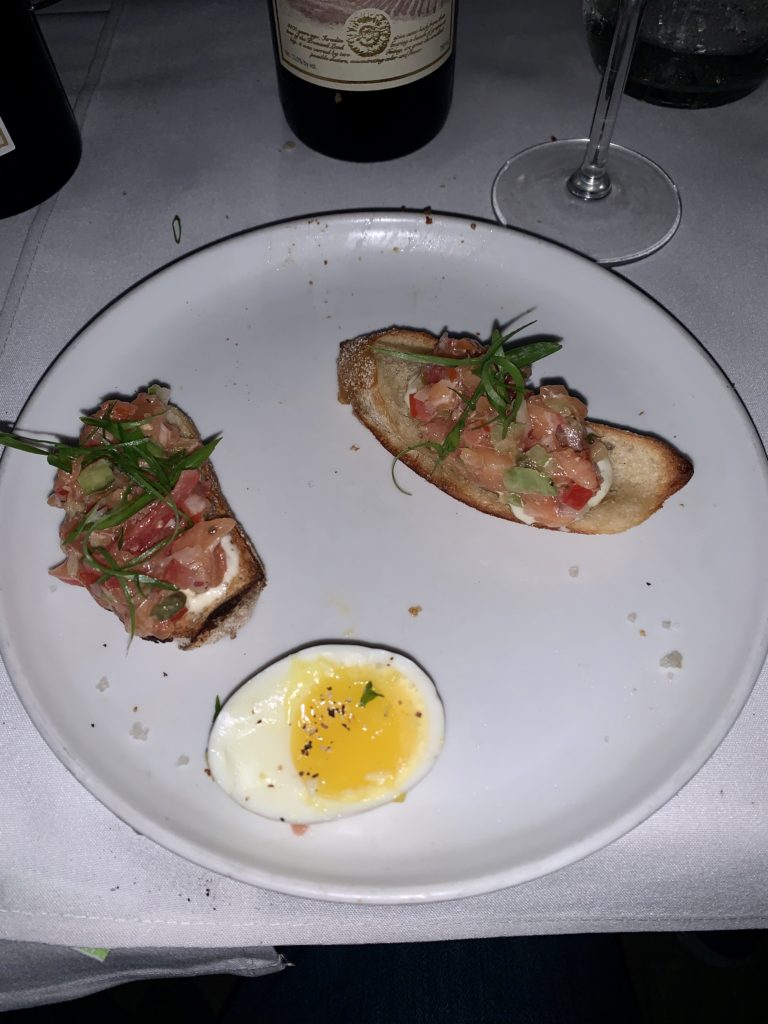
Salmon Tartare on Bruschetta 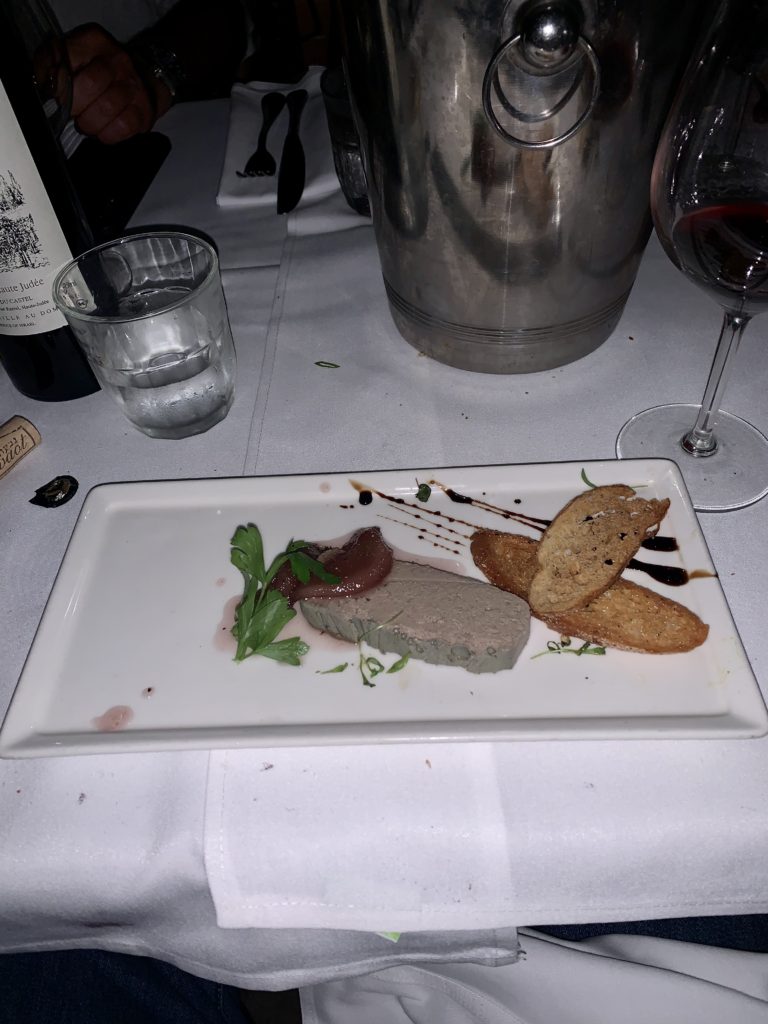
Liver Pate 
Charcuterie 
Pasta Papparadelle with Meat 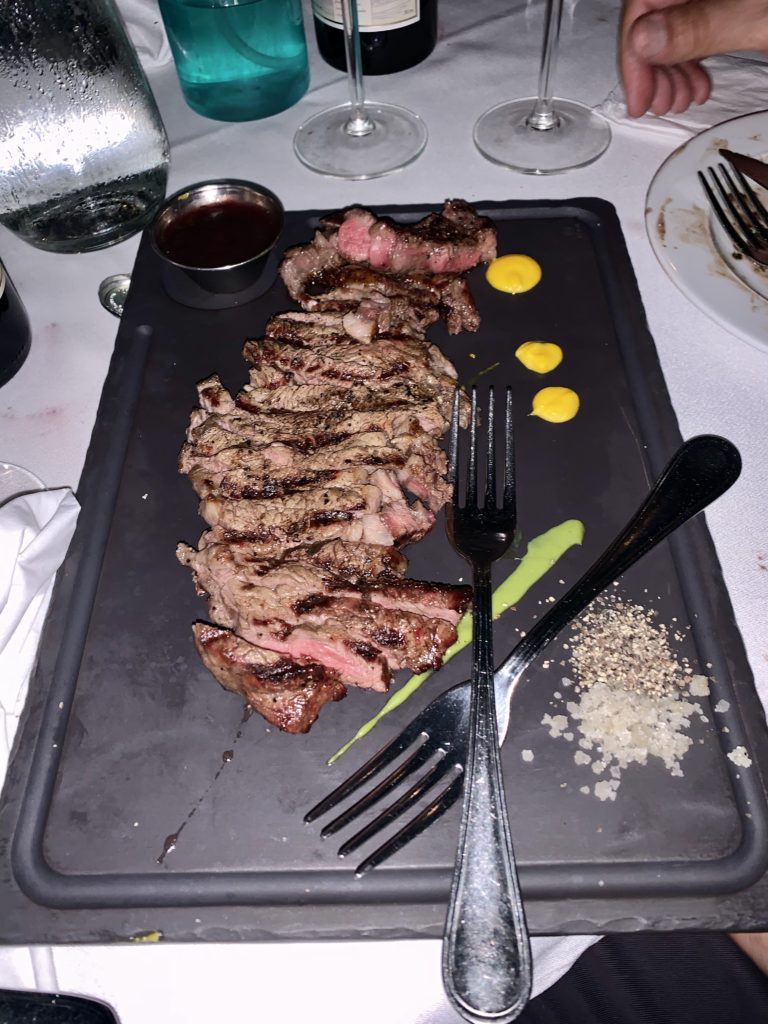
Entrecote 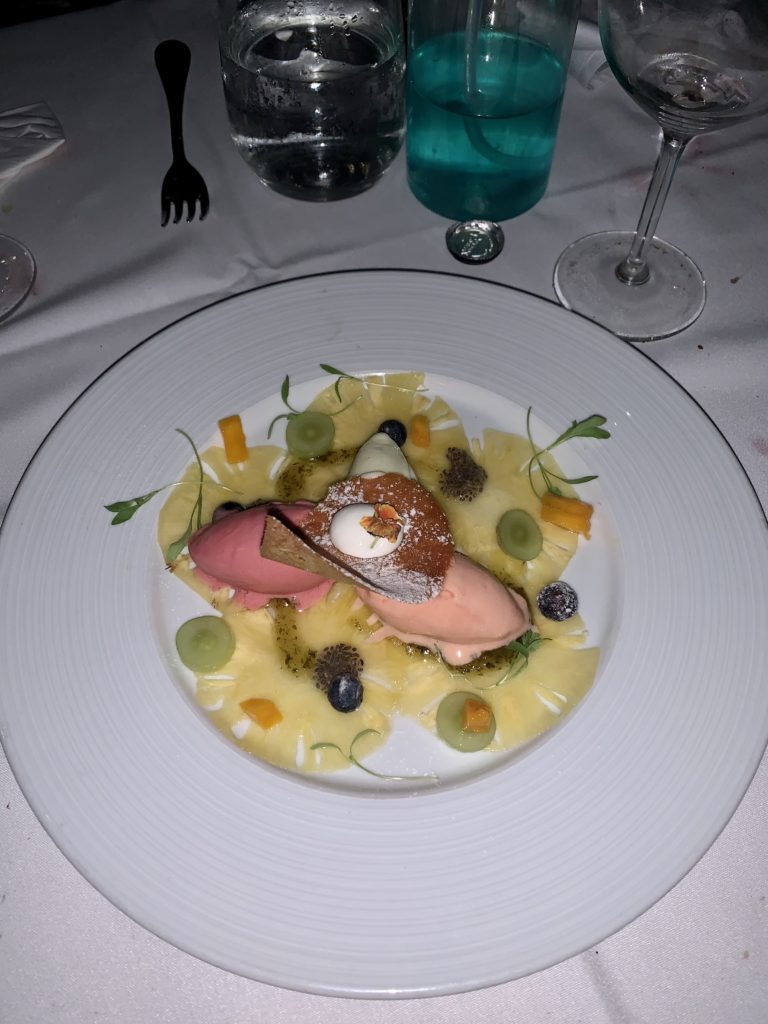
Pineapple Carpaccio 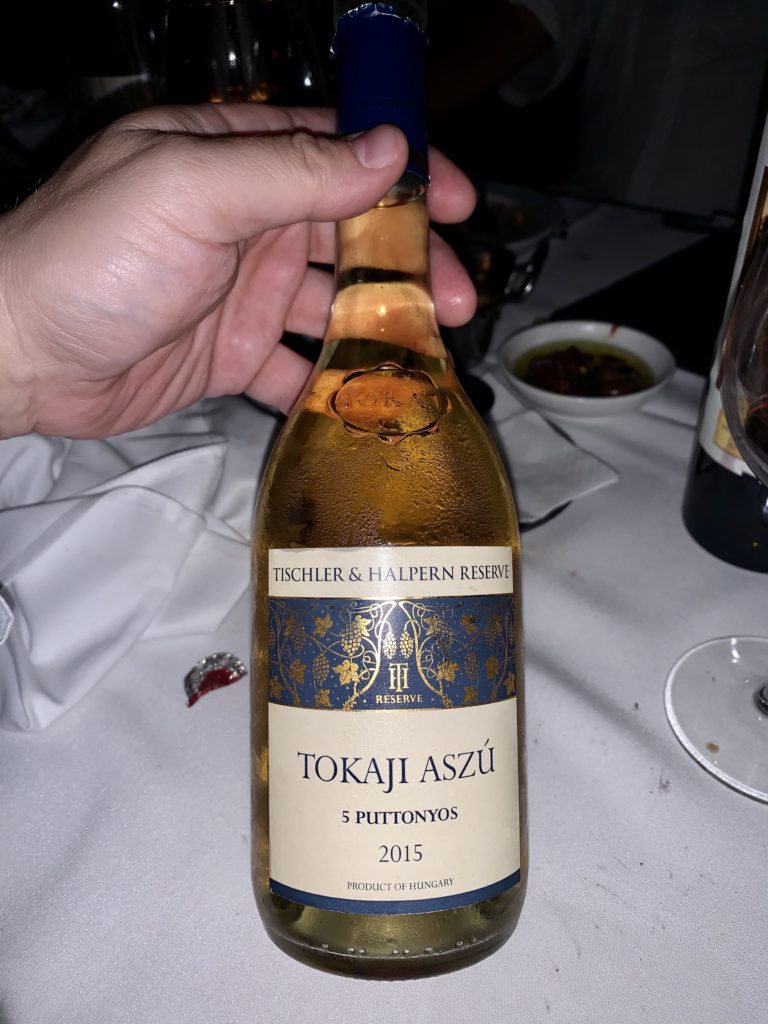
Tischler & Halpern Reserve, Tokaji Aszú, 5 Puttonyos, 2015 
Tischler & Halpern Reserve, Tokaji Aszú, 5 Puttonyos, 2015 (back Label) 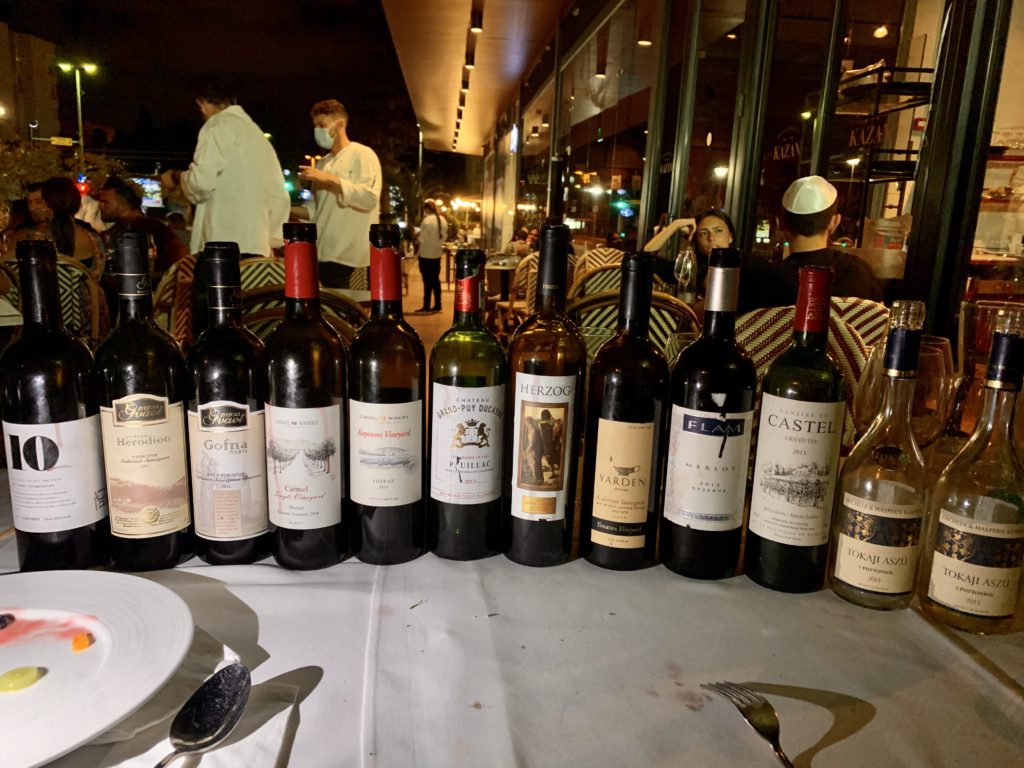
The Lineup